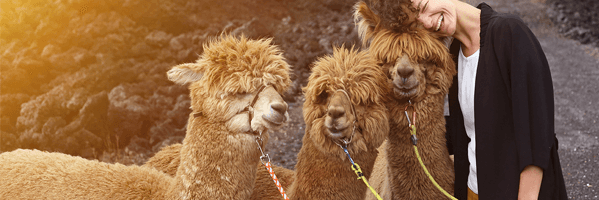Case study 1: 'Mind the gap' - bothies and alpacas
Publication date: 09 Sep 2021
What was the issue?
This case study will focus on the initiatives we set up to enable students to overcome some aspects of the ‘Covid Gap’ by providing extra-curricular opportunities.
I refer to the ‘Covid Gap’ which, from our interaction with students, illustrates the way in which the pandemic has impacted on students - in particular, missing informal extra-curricular community experiences related to their university time. The ‘Covid Gap’ impacts on every student, but we felt that certain factors made the puzzle more complicated. These seemed to relate to how being in different year groups and different demographic factors affect the experience of Covid. There appears to be a generalised effect experienced by year groups as a continuum which is impacted by the length of time students have been on the course, size of the year group, and also the interconnectivity of the group.
A subset of demographic factors which also seem to influence the effect of Covid are detailed below:
The analysis for this initiative also sought a balance of experience and, therefore, it is useful to cover positive student feedback in relation to the Covid Gap. These included:

How was it solved?
I want to emphasise that our initiatives were not aimed at ‘fixing’ the individual challenges experienced but to provide some varied outlets, some escapism and to try and enable new communities during this difficult period. These included:
I hope this case study has illuminated our experience of the Covid Gap, the complexity of the issue which I am sure is shared by many institutions and some ideas for supporting students in an extra-curricular setting and how they worked and evolved.
Publication date: 09 Sep 2021